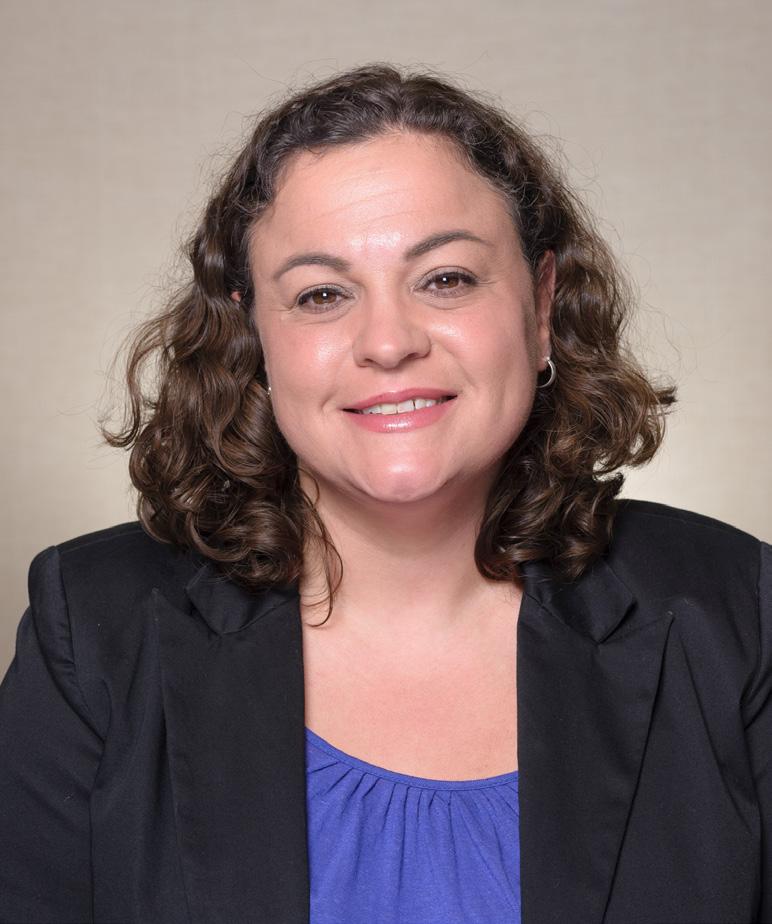

Our Thoughts on Q1 2024

So Far, So Good
As 2024 began, some investors were likely anxious. Would stocks continue the powerful advance of 2023 or had they gotten ahead of themselves? It didn’t take long to find out. After about a week of drifting lower, equities bolted higher. This resulted in the best first quarter for the S&P 500 since 2019.
The first quarter’s returns were broader than just a handful of large tech stocks that often dominated both headlines and index returns. All but one sector of the S&P 500 posted gains and it wasn’t just large domestic companies. Both smaller companies and international stocks also posted gains.
If you’re thinking stocks are doing well, you’re right. But, as always, there are some things to watch. It’s time for a talk on bonds and inflation. Even though inflation has come down considerably, some recent reports indicate that certain components are stickier than many would like. While some people expect the Feds to lower interest rates this year, it has caused a reset in both the timing and number of the Fed’s interest rate cuts. The 10-year Treasury yield ended 2023 at around 3.8% when it was commonly expected the Fed would move to cut rates soon and often.
Currently, the 10-year yield is around 4.4%. While not much of an increase in absolute terms, it bears watching since the expectations for lower inflation and interest rates have been important drivers of the rally in stocks.
It is important to note that the rise in interest rates we have seen can have a positive effect on investors. For years, when interest rates were near zero, savers were not adequately rewarded. Now that interest rates have moved up, there are positive implications for the important stream of income that bonds can provide.
The Psychology of Investing
At the end of the first quarter, the science of investing lost one of its brightest minds. Dr. Daniel Kahneman passed away at age 90. He was a professor, author and was awarded the Nobel Prize in Economics. He was a very unlikely recipient of the prize, as his main area of study was not mathematics or economics, but rather, psychology.
Some of his work was in prospect theory and loss aversion research. For brevity, an oversimplification is that the human brain is wired to feel the pain of loss far greater than the joy of success. Also, the repetition of information and emotion with which it is presented are often given far greater weight than the accuracy or probability of it occurring.
He wasn’t saying people were foolish or lazy. As advisors, we know that isn’t true. He was building the case that as humans, we need to be honest with
ourselves and acknowledge these biases and build mathematical processes to control them. He also warned to avoid complex language in discussing investing when simpler language will do. While we certainly won’t compare ourselves to Dr. Kahneman, we do use some of his principles in our work. As we often say, we know there are people attached to the money we manage. Quite simply, we follow the principles of humility, doing the math and separating the truth from the noise.
We Are Here
We have had a strong start to 2024, but the job is far from finished. As noted, the inflation and interest rate issues are not yet settled. The chance of recession, while no longer commanding headlines, is still a small possibility. A contentious election is approaching, and emotions will be running high. We have been through all of this and more over the years. We are ready.
It is an honor to serve you and the people you care about. If you have questions or concerns or just want to talk, we are here for you.
Sincerely,
Peter, Matt, John and Devon
Sources: Forbes, CNBC, S&P Global, Wall Street Journal, The Economist, Federal Reserve Bank of St. Louis.
The performance of an unmanaged index is not indicative of the performance of any particular investment. It is not possible to invest directly in any index. Past performance is no guarantee of future results. This material represents an assessment of the market environment at a specific point in time and is not intended to be a forecast of future events, or a guarantee of future results. Three-year performance data is annualized. Bonds have fixed principal value and yield if held to maturity and the issuer does not enter into default. Bonds have inflation, credit, and interest rate risk. Treasury Inflation Protected Securities (TIPS) have principal values that grow with inflation if held to maturity. High-yield bonds (lower rated or junk bonds) experience higher volatility and increased credit risk when compared to other fixed-income investments. REITs are subject to real estate risks associated with operating and leasing properties. Additional risks include changes in economic conditions, interest rates, property values, and supply and demand, as well as possible environmental liabilities, zoning issues and natural disasters. Stocks can have fluctuating principal and returns based on changing market conditions. The prices of small company stocks generally are more volatile than those of large company stocks. International investing involves special risks not found in domestic investing, including political and social differences and currency fluctuations due to economic decisions. Investing in emerging markets can be riskier than investing in well-established foreign markets. The MSCI EAFE Index is designed to represent the performance of large and mid-cap securities across 21 developed markets, including countries in Europe, Australasia and the Far East, excluding the U.S. and Canada. The Russell 2500 Index measures the performance of the 2,500 smallest companies (19% of total capitalization) in the Russell 3000 index. The S&P 500 index measures the performance of 500 stocks generally considered representative of the overall market. The Wilshire REIT Index is designed to offer a market-based index that is more reflective of real estate held by pension funds.

Devon Gluck, CFP®, CIMA® Partner, Financial Planner
Devon.Gluck@LFG.com
Unlocking Tax-Free Wealth:
Is a Backdoor Roth IRA Right for You?
A backdoor Roth IRA is a strategy rather than an official type of individual retirement account. It is a technique used by high-income earners, who exceed Roth IRA Modified Gross Income limits, to convert their traditional IRA to a Roth IRA. For individuals who are single, that income limit is $161,000 and for those who are married, the limit is $240,000.
So, How Exactly Does a Backdoor Roth IRA Work?
You contribute non-deductible money (money you won’t get a tax break for) to a traditional IRA. You then promptly convert all or a portion of the traditional IRA balance, including any earnings, to a Roth IRA. This conversion triggers taxes on any pre-tax contributions, including any earnings on those contributions, that you may have rolled into the traditional IRA from other retirement accounts.
You might be curious if this is something worth considering for yourself. It is crucial to start by questioning your motivation behind opting for a Backdoor Roth IRA. Given the abundance of generic financial advice available, it is important to speak with a financial advisor to determine if this approach aligns with your specific circumstances – everyone’s situation is different! Please ensure you also work closely with your tax professional if you consider this strategy.
Three Main Tax Advantages of Roth IRAs:
1. Qualified withdrawals, including all the earnings, are tax-free after age 59 ½ and the account has been held for at least 5 years, providing significant tax advantages during retirement.
2. Roth IRAs do not have required minimum distributions during your lifetime. An exception to this rule is inherited Roth IRAs, which do require you to take a required distribution. They’re also a great asset to pass on to your next generation.
3. Flexibility – Your contributions can be withdrawn at any time without penalty. The earnings portion cannot be withdrawn until you have reached age 59 ½ and the account has been held for at least 5 years.
Pro-rata rule constraint:
The most common constraint that you may experience when attempting to do a Backdoor Roth IRA is the pro-rata rule, which comes into effect if you have an IRA account with pre-tax and after-tax funds. The rule states that you cannot convert only the after-tax funds to a Roth IRA while leaving the pre-tax funds untouched. Instead, the conversion is considered to be a proportionate mix of both types of funds. Here’s an example to help illustrate this:
If you have a $93,000 IRA (with pre-tax dollars), and you make a $7,000 contribution to a non-deductible IRA (a key step in doing a Backdoor Roth conversion), then when you go to make that conversion, 93% of the conversion will be taxable income to you, and 7% will not be taxable. If you do not have an IRA with pre-tax dollars, then none of the conversion will be considered taxable income to you. And that’s what you want, everything to be non-taxable.
Things to Consider:
An important thing to consider is the limit for contributions to a Backdoor Roth. As of 2024, If you are under the age of 50, the limit is $7,000, and if you are 50 and over, the limit is $8,000. Depending on your situation, those contribution amounts may not be high enough to justify having to deal with getting around the pro-rata rule, but there may be some other options.
Conversely, if you participate in a Roth 401k, if your company plan allows this, you could contribute up to $23,000 in after-tax dollars if you’re under 50, and $30,500 if you’re 50 and over, in 2024. Now, those are meaningful amounts! Roth 401ks do not have income limits, making this an option for anyone.
As you can see, these strategies offer significant benefits, but they come with complexities and may not be suitable for everyone. If you are interested in learning more about Roth IRAs, reach out to us to schedule a meeting to discuss your situation and see if this approach is a good fit for you.
Source: https://www.fidelity.com/learning-center/personal-finance/backdoor-roth-ira

Navigating Investment Strategies During an Election Year
Investing during an election year can evoke a mixture of anticipation and anxiety for many market participants. With political campaigns often accompanied by promises of policy changes and uncertainty about future economic directions, investors may wonder how best to navigate the turbulent waters of the financial markets. While it’s natural to feel cautious, history suggests that staying the course with a disciplined investment strategy is often the most prudent approach.
Understanding Market Volatility
One of the hallmark features of the financial markets during an election year is increased volatility. This volatility stems from uncertainty surrounding potential policy shifts and their impacts on various sectors of the economy. Investors may react impulsively to news headlines and political rhetoric, leading to sharp swings in asset prices. However, it’s essential to recognize that market volatility during an election year is not unusual. Historically, markets have demonstrated resilience and a tendency to recover from short-term fluctuations, particularly when underlying economic fundamentals remain strong.
Maintaining a Long-Term Perspective
In times of heightened uncertainty, it’s crucial for investors to maintain a long-term perspective. While election outcomes may introduce short-term market turbulence, the long-term trajectory of the economy is influenced by a multitude of factors beyond political cycles. Successful investors focus on building diversified portfolios tailored to their risk tolerance, investment horizon, and financial goals. By diversifying across asset classes and sectors, the impact of a single, possibly negative event, including election-related volatility, can be reduced. Staying informed and adapting strategically while maintaining a long-term perspective is essential; staying informed about potential policy changes and their implications is also prudent. Investors should pay attention to candidates’ economic platforms and how they align with market expectations. Moreover, adapting investment strategies effectively in response to new information is part of prudent risk management. However, knee-jerk reactions based solely on short-term political developments can often lead to suboptimal outcomes. Instead, investors should assess the potential impact of policy changes on specific industries and companies within their portfolios and make adjustments accordingly. Patience and discipline are important virtues that serve investors well in any market environment, particularly during election years. While emotions may run high amidst political uncertainty, successful investors resist the temptation to make impulsive decisions based on fear or speculation. Instead, they adhere to a well-defined investment plan, while periodically rebalancing their portfolios to maintain desired asset allocations. By focusing on factors within their control, such as asset allocation, diversification*, and cost-effective investing, investors can weather short-term volatility and position themselves for long-term success.
Investing during an election year can be a daunting endeavor, fraught with uncertainty and volatility. However, by maintaining a long-term perspective, staying informed, and adhering to a disciplined investment strategy, investors can navigate the ups and downs of the market with confidence, regardless of the political landscape. While election outcomes may introduce short-term fluctuations, the fundamentals of sound investing remain unchanged.
*Diversification may help reduce, but cannot eliminate, risk of investment losses.
Luke Charlton Planning Analyst
Luke.Charlton@LFG.com
The Importance of Reviewing Your Beneficiary Designations
Beneficiary designations, often established when opening investment accounts, starting a new job with employer-sponsored benefits, or purchasing life insurance policies, are a crucial aspect of ensuring your financial wishes are carried out after your passing. However, simply naming a beneficiary isn’t a one-time action. Life circumstances can change significantly over time, and what may have been a clear and appropriate designation years ago might no longer reflect your current desires. For this reason, it’s essential to periodically review your beneficiary selections. By taking a proactive approach and keeping your designations up to date, you can safeguard your assets and ensure they are distributed according to your evolving wishes.

Cristina Kothari, MBA Associate Director
Cristina.Kothari@LFG.com
Benefits of Reviewing Your Beneficiary Designations:
Accuracy: Ensuring that listed beneficiaries are accurate and up-to-date is crucial to make sure that the intended individuals or entities receive the assets or benefits designated to them.
Superseding Will or Trust: Beneficiary designations on certain accounts, like retirement plans and life insurance policies, take precedence over instructions in a will or trust. Outdated beneficiary designations may override the wishes outlined in these legal documents.
Estate Planning: Beneficiary designations are an important aspect of estate planning. Reviewing beneficiaries allows you to assess whether your current designations align with your overall estate plan and financial goals.
Avoiding Probate and Delays: Properly updated beneficiary designations help assets pass directly to beneficiaries outside of probate, thus avoiding potential delays in distributing assets to loved ones.
Asset Protection and Tax Efficiency: Correct beneficiary designations can help protect assets from creditors and help to ensure a tax-efficient distribution of assets to beneficiaries. Failing to update beneficiaries could result in unintended tax consequences or loss of asset protection.
Sense of Security: Regularly reviewing and updating beneficiaries provides sense of security, knowing that your assets will be distributed according to your wishes and that your loved ones will be provided for in the event of your passing.
Estate Planning Strategies
Setting up an estate plan in the event of your incapacity or passing can help make the process easier on your loved ones — and help clear up any confusion as to how to handle your assets.
Remember, you can always plan ahead, but you can’t plan behind. Having a well-defined estate plan will help give you and your family a sense of security if a tragedy happens. Here are three documents to keep in mind.
Please Note: This is not a service offered by MWA and this information is provided to you for educational and informational purposes.
Last Will & Testament
Your Will identifies the executor, or personal representative, for your estate. This is the person who will oversee the distribution of your assets and follow your wishes. Your Will should also identify guardians who will care for your minor children and provide details regarding how and to whom you distribute your assets.
IMPORTANT TO NOTE: In almost all cases, a beneficiary designation overrides a Will. If an individual is named as a beneficiary on any account, that named beneficiary will override the Last Will & Testament for that particular account.
Note that your Last Will and Testament only becomes active after you pass away, and a probate court oversees its administration. If you pass without a Will, the state you reside in has a plan for you, but those plans may not be consistent with your intentions, which is just another reason why it’s so important to start planning early.
Power of Attorney
The agent named in this document will be in charge of managing your assets and making the financial decisions, such as filing tax returns or buying and selling real estate, needed to help see your wishes through in the event that you are unable to do so.
IMPORTANT TO NOTE: If you have a Trust and that document does not specifically state that the Power of Attorney can act on your behalf, ONLY the Trustee named in the Trust has authority to act.
Generally speaking, a Trustee (who is not also the Grantor) cannot appoint a Power of Attorney to take over the Trustee’s duties or responsibilities, unless this is something that is directly permitted by the Trust Deed or a court order.
Advance Medical Directive
Setting up an Advance Medical Directive (including appointing your healthcare agent and creating a Living Will) helps guide doctors and caretakers to make the appropriate decisions if you become terminally ill and can’t act on your own.
By specifying how and when to proceed with specific treatment plans, you’ll take the possibility of uncertainty out of the equation and make it easier for people to follow your wishes. Be sure that the document also includes a HIPAA (Health Insurance Portability and Accountability Act) privacy waiver so that your medical agent has access to your medical information!
Estate Planning Strategies (continued)
Trusts
There are several different types of trusts. You should consult with an attorney to find out what type of trust is appropriate for your situation. Some are: Living Trust, Residuary Trust, Revocable Trust, Irrevocable Trust.
Account Registration Types (non-retirement accounts)
• TOD – Transfer on Death, similar to POD (Payable on Death) – Investment account will transfer to the named beneficiary when the account owner dies.
• JTTIE – Joint Tenancy by the Entirety – For married couples or legal domestic partners. This will end if a couple gets divorced.
• JTTIC – Joint Tenants in Common – A legal relationship in which two or more people own a piece of property or another asset where no rights of survivorship are afforded to any of the account holders. If one owner dies, the surviving owner does not necessarily acquire the rights of the deceased owner.
• JTWROS – Joint with Rights of Survivorship – Provides equal ownership rights to all owners. If one owner passes away, the remaining owners fully own the account.
Other Items to Note
• Adding a beneficiary to your vehicle: You can name a beneficiary on your vehicle, but only after the loan is paid off. The vehicle would then go directly to the named beneficiary and is not considered part of your estate.
• POD on a bank account: With the proper form filed, your bank has a legal document clearly stating the named beneficiary. PODs typically override a Will or any other financial estate planning document (such as a Trust). As long as you’re living, your beneficiary does not have access to your account unless you’ve set them up as a cosigner.
• Residency is Not the Same as Domicile:
• Domicile is your home base
• Residency accounts for all places which you own simultaneously, regardless of the amount of time you spend there. Be aware that taxes are different in different states and there can be limits as far as tax deductions. You should consult a tax advisor for further information.

MWA Team News!
Painting with a Twist!
To kick off our team events for the year, we recently ventured out for a fun-filled creative afternoon at Painting with a Twist! At the beginning of each year, we randomly select two team members to plan a fun activity for the whole group. This year, Jaida Maller took the lead and chose a unique and engaging option – a guided painting session.
A talented instructor led us step-by-step through the creation of a scenic masterpiece. It was fascinating to see how, even with the same instructions and materials, each person’s interpretation and artistic flair resulted in a truly individual piece. The atmosphere was filled with laughter, encouragement, and a healthy dose of friendly competition as we all strived (with varying degrees of success!) to capture the essence of the chosen scene. This event was a great way to unwind after a busy week and connect with team members outside of the usual work setting.



Expanding Our Knowledge
• Jonathan Webb completed his CFP® Capstone project and takes the final exam in July
• Brandon Cawley passed the Series 7 exam in early March
• Tina Kothari is currently completing coursework for the CDFA® designation (Certified Divorce Financial Analyst)
Connect With Us
Phone 410-771-5660 Fax 443-589-0330

www.mallerwealthadvisors.com
www.linkedin.com/company/mallerwealthadvisors/
How to Reach Us
Wealth Advisory Services

Peter D. Maller, MBA, CFP®, AEP® – Founder | Peter.Maller@LFG.com

Matthew Aversa, ChFC® – Managing Partner, Financial Planner | Matthew.Aversa@LFG.com
Devon G. Gluck, CFP®, CIMA® – Partner, Financial Planner | Devon.Gluck@LFG.com
John E. Layug, MBA, CFP®, AEP® – Partner, Financial Planner | John.Layug@LFG.com
Brandon Cawley, CFA® – Director of Investment Management | Brandon.Cawley@LFG.com
Luke Charlton – Planning Analyst | Luke.Charlton@LFG.com
Cristina Kothari, MBA – Associate Director | Cristina.Kothari@LFG.com
John “Jack” Lombardo, CFP® – Senior Planning Analyst | John.Lombardo@LFG.com
Eric McIntyre, CFP® – Senior Planning Analyst | Eric.McIntyre@LFG.com
Jonathan Webb, MBA – Senior Planning Analyst | Jonathan.Webb@LFG.com
Louis Wilson, CIMA®, CFP® – Senior Planning Analyst | Louis.Wilson@LFG.com
Zellie Wothers, CRPS®, CFP® – Associate Director/401k Specialist | Zellie.Wothers@LFG.com
Operations and Scheduling
Mary Goles, FPQP™, aPHR® – Director of Operations | Mary.Goles@LFG.com
Administrative Support and Implementation
Kara Scott, FPQP™ – Director of Administration | Kara.Scott@LFG.com
Denise Poferl, FPQP™ – Senior Implementation Specialist | Denise.Poferl@LFG.com
Jennifer Schepers – Implementation Specialist | Jennifer.Schepers@LFG.com
Marketing and Client Experience
Jaida Maller – Lead Marketing and Communications Specialist | Jaida.Maller@LFG.com
Registered associates of Maller Wealth Advisors are registered representatives of Lincoln Financial Advisors Corp. Securities and investment advisory services offered through Lincoln Financial Advisors, a broker-dealer (member SIPC) and registered investment advisor. Insurance offered through Lincoln affiliates and other fine companies. Maller Wealth Advisors is not an affiliate of Lincoln Financial Advisors Corp. 201 International Circle, Suite 100, Hunt Valley, MD 21030.
Lincoln Financial Advisors Corp. and its representatives do not provide legal or tax advice. You may want to consult a legal or tax advisor regarding any legal or tax information as it relates to your personal circumstances.
CRN-6268708-011924
